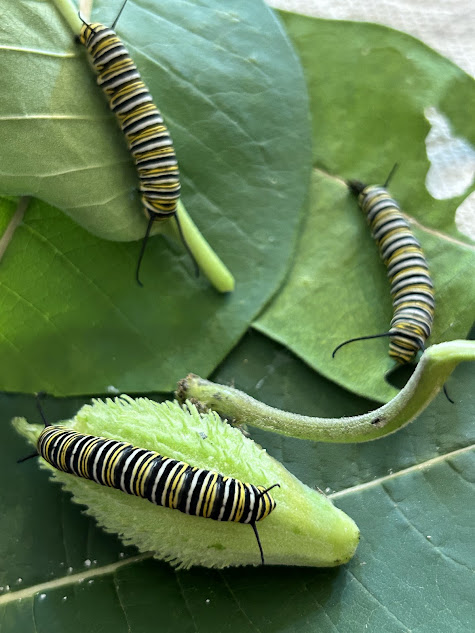
Congratulations and welcome! If you’re here, you’re likely raising your own monarch butterflies or thinking about it and wondering what do monarch caterpillars eat? Well, you’re in the right spot!
Also, if you’re looking for info about their habitat, life cycle, and migration, check it out here! We’ve raised monarchs with our four kiddos and absolutely loved the learning process. Plus, it’s a great way to get kids curious about biology and entomology.
In this post, we’re answering the big question: What do monarch caterpillars eat?
The Monarch Caterpillar Diet: Milkweed, Milkweed, and More Milkweed!
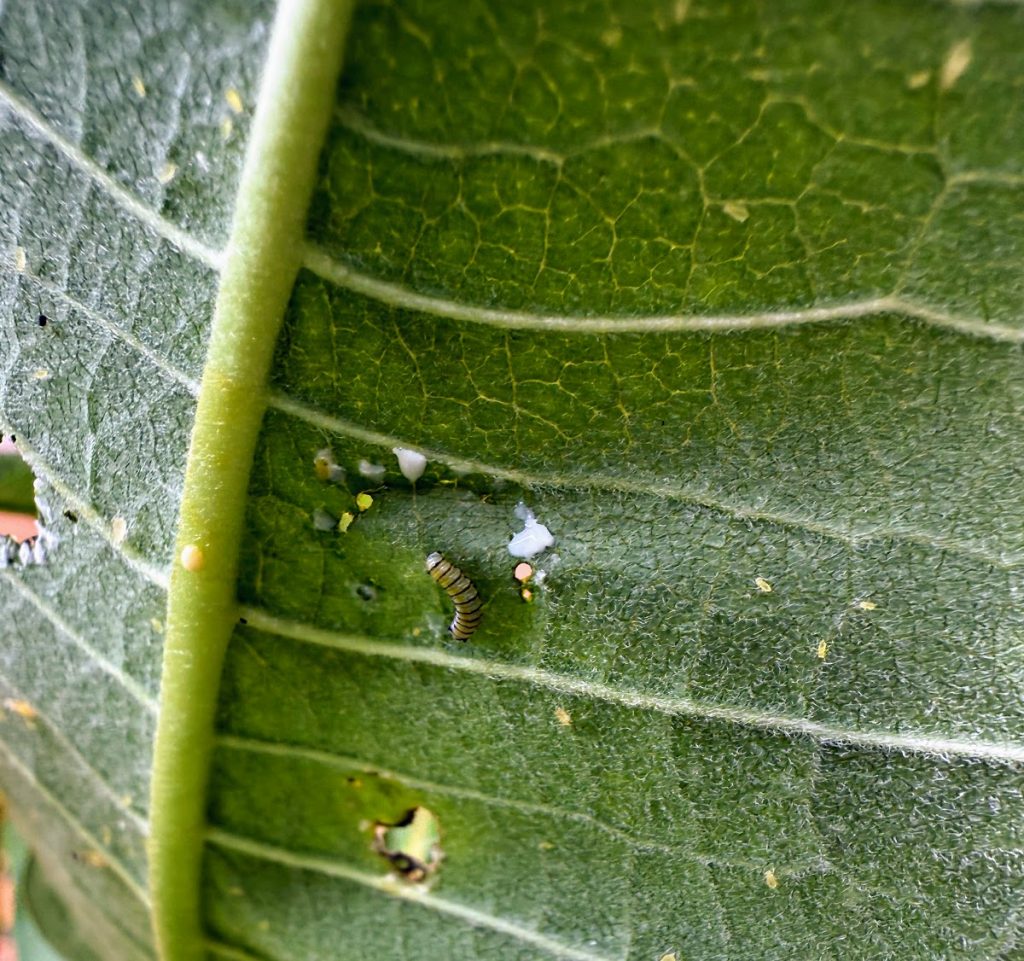
Did you know that monarch caterpillars are incredibly picky eaters? In fact, they only eat one plant — milkweed. This plant family, called Asclepias, includes over 140 varieties! Monarch caterpillars rely on milkweed to grow strong and healthy.
Fun Learning Fact: Believe it or not, a monarch caterpillar eats enough milkweed leaves to equal the weight of about 200 paper clips. That’s a lot of munching!
Why Do Monarch Caterpillars Eat Milkweed?
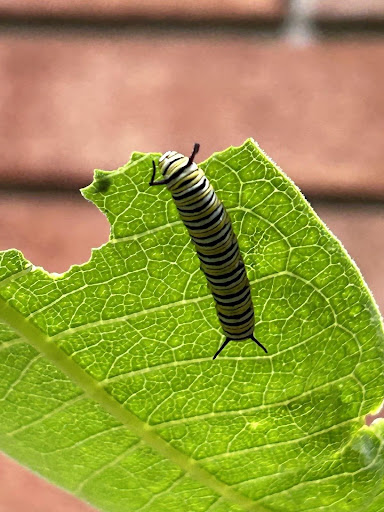
You might wonder why milkweed is the only food monarch caterpillars eat. Well, the answer lies in a natural chemical called cardenolides found in milkweed. Interestingly, these chemicals are toxic to most animals — but monarch caterpillars have a superpower! They absorb the toxin and store it in their bodies, making them taste bad to predators.
Even after transforming into butterflies, monarchs still retain that protection. In fact, milkweed acts like their superhero shield!
Tip for Parents: To stay safe, be sure to wash hands and scissors after handling milkweed, as the sap can be irritating.
Monarch Caterpillars’ Favorite Milkweed Varieties
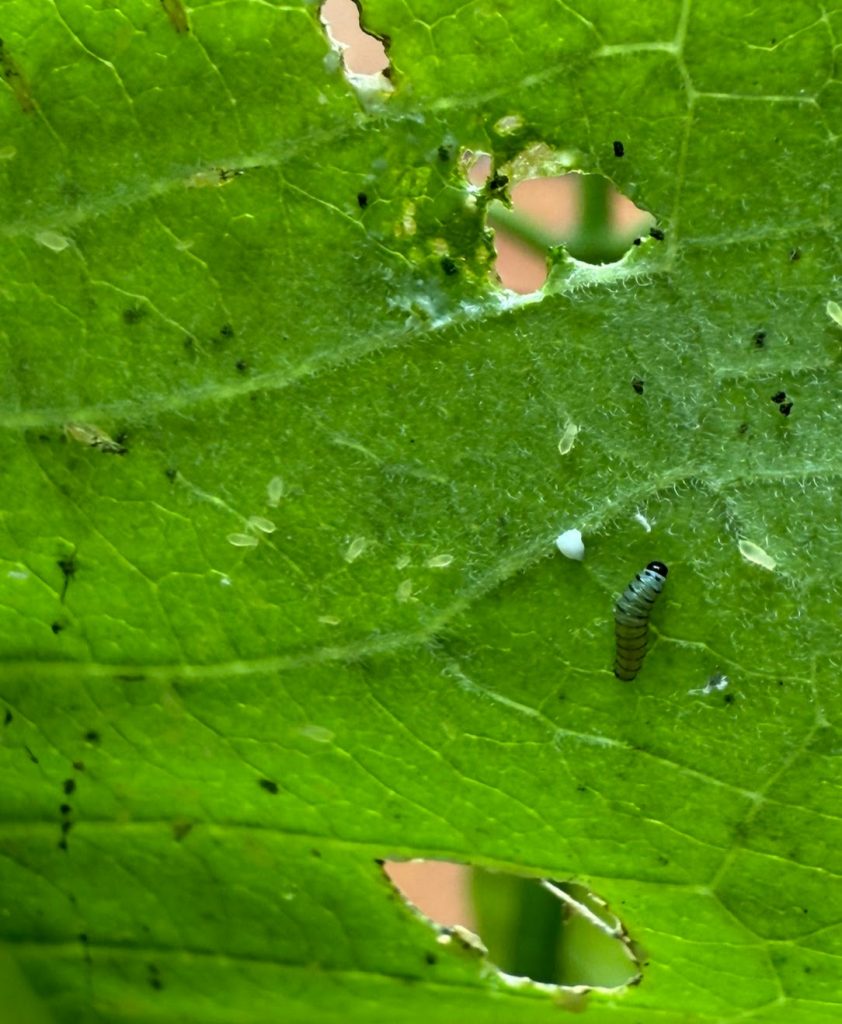
Here are a few kinds of milkweed that monarch caterpillars love to eat:
• Common Milkweed (Asclepias syriaca): Big soft leaves. A monarch favorite!
•. Swap Milkweed (Asclepias incarnata): Grows near water and has thinner leaves.
•. Butterfly Weed (Asclepias tuberosa): Bright orange flowers but tougher leaves; not a baby caterpillar favorite.
•. Tropical Milkweed (Asclepias curassavica): Common in gardens, but use with caution in colder zones.
Fun Fact: As they develop, monarch caterpillars change color—from nearly clear to bold stripes of yellow, black, and white.
The Eating Habits of Monarch Caterpillars
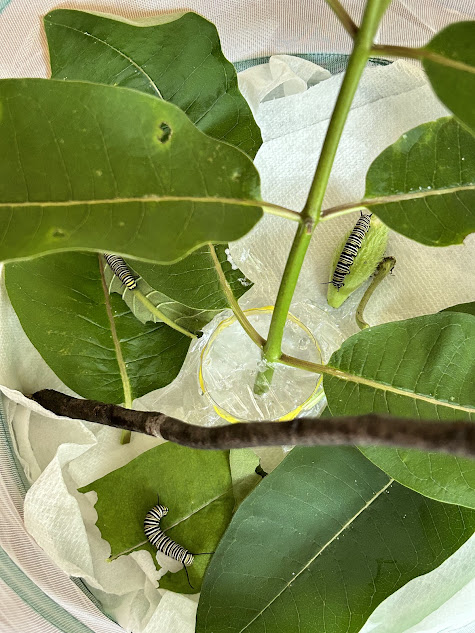
Monarch caterpillars are like little eating machines! They go through five different stages called instars. In each stage, they need lots of milkweed to munch on. When a caterpillar first hatches, it’s super tiny and starts nibbling on the underside of a milkweed leaf, where it’s soft and easy to eat. As it grows bigger, the caterpillar sheds its skin and moves on to the next stage, needing even more milkweed.
By the time it reaches the fifth instar, the caterpillar can be up to 2 inches long and will munch up whole leaves, sometimes leaving a milkweed plant completely bare!
Did You Know? The bright stripes on a monarch caterpillar warn predators: “I’m toxic — don’t eat me!”
Why Milkweed Conservation Matters
Imagine if your child’s favorite snack or playground disappeared.
Unfortunately, that’s what’s happening to milkweed across North America. Due to expanding farms and increased pesticide use, available milkweed has drastically declined — as a result, monarch survival is now under serious threat.
Here’s how you can help:
•. Plant native milkweed in your yard or balcony garden.
•. Avoid pesticide and herbicide use.
•. Encourage local schools and parks to grow monarch-friendly plants.
Fun Fact: For example, some farmers now plant milkweed along field edges to support monarch habitats!
Wrapping Up: What Do Monarch Caterpillars Eat?
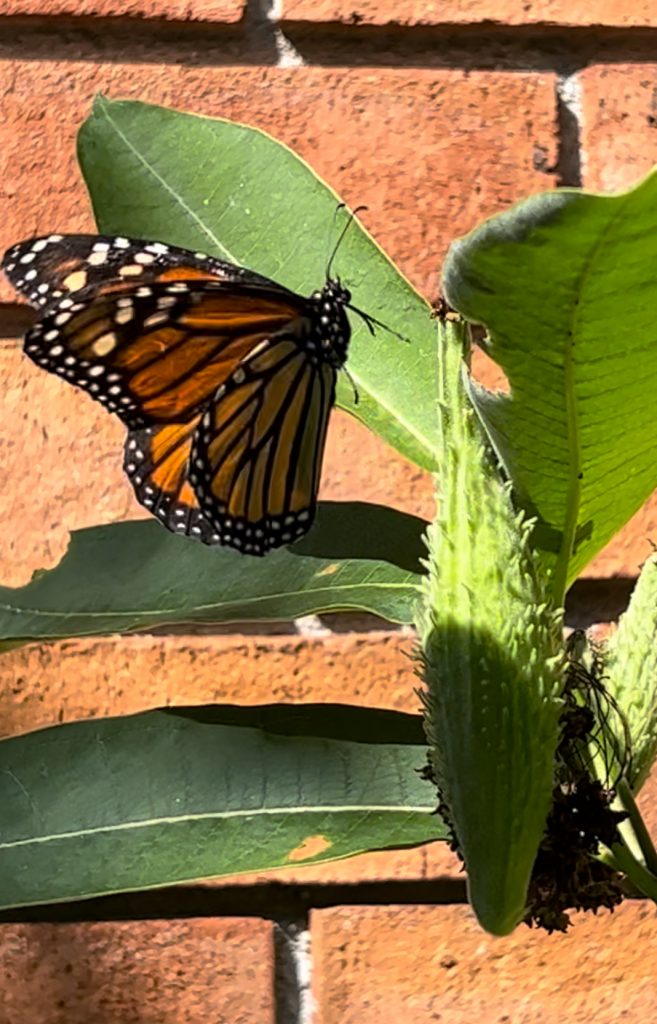
After all, milkweed isn’t just a snack — it’s essential for monarch caterpillar survival. By taking simple steps like planting milkweed and learning about their diet, you’re actively doing your part to help these amazing butterflies thrive.
We hope this post helped your family learn what monarch caterpillars eat. Want more info on their habitat or life cycle? You can find that here.
Stay in touch — we’ll be sharing more butterfly and nature-based family projects soon!
If you are interested in participating in Monarch Tagging, check out the link below!
https://monarchwatch.org/tagging/
